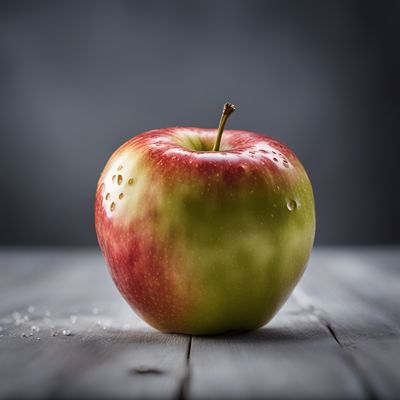
Ingredient
Crab apples
The Tart Delight: Exploring the World of Crab Apples
Crab apples are typically small in size, ranging from 1 to 2 inches in diameter. They have a firm and crisp texture, similar to regular apples, but their taste is much more tart and acidic. The skin of crab apples can vary in color, ranging from bright red to yellow or green, and their flesh is usually pale yellow. Despite their small size, they are packed with flavor and can be enjoyed raw or cooked.
Origins and history
Crab apples are believed to have originated in Asia and Europe. They have a long history dating back to ancient times, where they were cultivated for their ornamental beauty as well as their culinary uses. In many cultures, crab apples hold symbolic significance and are associated with love, fertility, and abundance. Over time, they have been used in various traditional dishes and preserved in the form of jellies, jams, and sauces.
Nutritional information
Crab apples are a good source of dietary fiber, vitamin C, and antioxidants. They are low in calories, with approximately 50 calories per 100 grams.
Allergens
There are no known allergens associated with crab apples.
How to select
When selecting crab apples, look for fruits that are firm and free from bruises or blemishes. Choose ones that have a vibrant color and a pleasant aroma. Avoid any that feel soft or have wrinkled skin, as these may indicate spoilage.
Storage recommendations
To maintain the freshness of crab apples, store them in a cool and dry place, such as the refrigerator. They can be kept for up to a month when stored properly. If you have an abundance of crab apples, consider preserving them by making jams, jellies, or even pickling them.
How to produce
Crab apples can be grown in your own backyard or garden. They thrive in temperate climates and require well-drained soil and full sun. Planting a crab apple tree or shrub is relatively easy, and with proper care and maintenance, you can enjoy a bountiful harvest of these delightful fruits.
Preparation tips
Before using crab apples, wash them thoroughly and remove the stems. Depending on the recipe, you may choose to peel the skin or leave it intact. Crab apples can be enjoyed raw, sliced and added to salads, or cooked in various dishes such as pies, tarts, sauces, or even savory dishes like roasted meats. When cooking with crab apples, keep in mind that their tartness may require additional sweeteners to balance the flavors.
Substitutions
If crab apples are not available, you can substitute them with regular apples, although the tartness and unique flavor of crab apples may be missed.
Culinary uses
Crab apples are commonly used in the preparation of jellies, jams, and sauces due to their high pectin content. They can also be used to add a tangy twist to pies, tarts, and desserts. In savory dishes, crab apples can be cooked down into chutneys or used to make flavorful sauces for roasted meats.
Availability
Crab apples are commonly available in North America, Europe, and parts of Asia. They can also be found in farmers markets or specialty grocery stores.

